On a post-déconfinement walk through the historic Marais district of central Paris, I stumbled upon this curious contraption:
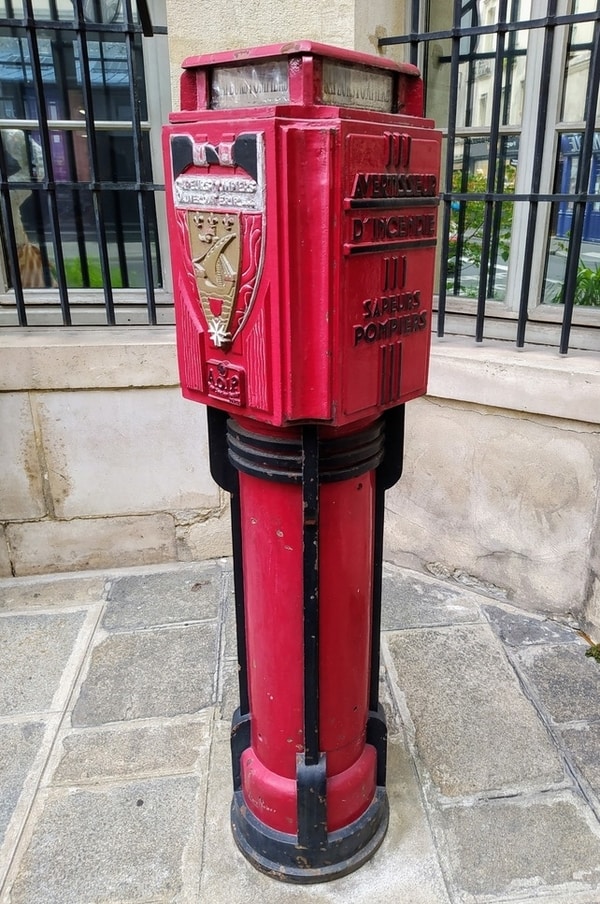
Standing outside a fire station, this red box is labelled “Avertisseur d’incendie” (fire alarm) and “Sapeurs pompiers” (fire brigade). Taking a closer look:
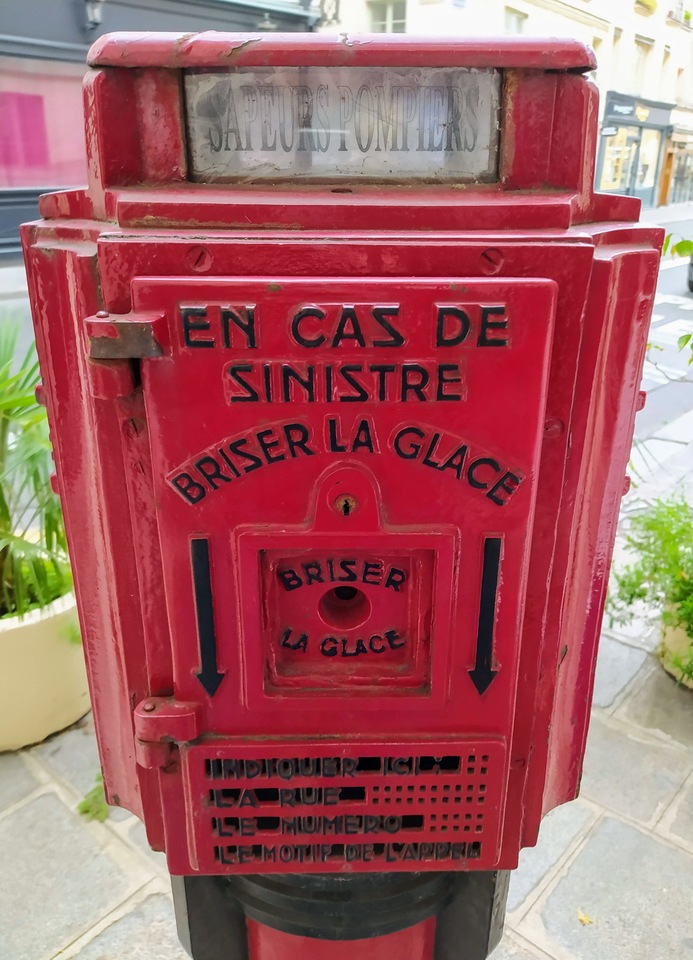
The text indicates “En cas de sinistre, briser la glace”: in case of fire, break glass. A message further down reads, “Indiquer ici : la rue / le numéro / le motif de l’appel”: “Indicate here the street, number and reason for the call”.
Naturally, being the kind of person who blogs about infrastructure and street furniture, this piqued my interest. I had never seen such a thing before, but a quick web search tells me that fire alarm call boxes like these have served in cities around the world, from London and Berlin to Boston and San Francisco. So what’s their story?
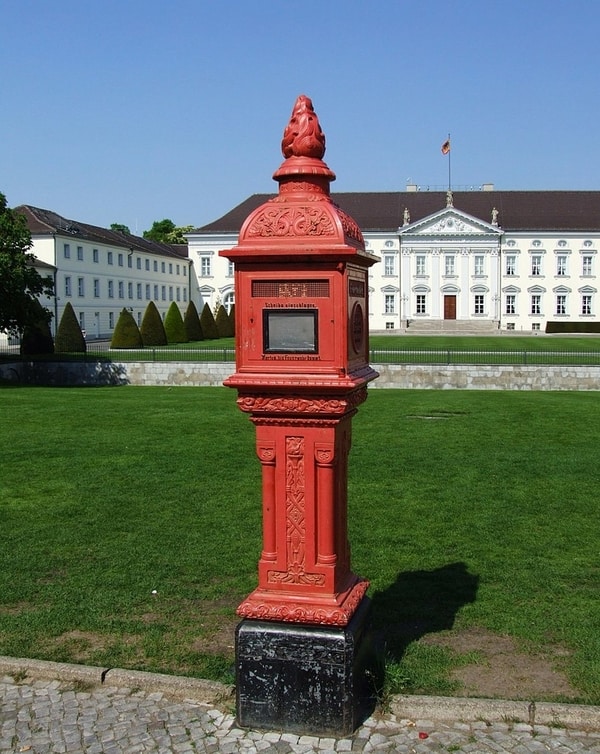
Origins
As an ancient city, Paris has a long history of fires, and therefore of firefighting. However, it wasn’t until the Napoleonic era that a fire brigade worthy of the name came into being. After a major blaze at the Austrian embassy in 1810, the Emperor ordered the creation of a division of the French army charged with fighting fires. This battalion is the direct predecessor of today’s brigade, which still operates as part of the army. With over 8000 staff, it’s among the world’s largest urban fire departments1.
For the first few decades of this service’s existence, the only way to call for help was by running to the nearest station. Running was also the method of communication between firefighters themselves: if a small station needed backup from a larger one, this call for help had to be carried on foot. By 1831 the battalion had started to subcontract some of this work, with the staff of small stations asking the police to alert their larger neighbours. When the police were unavailable, they would “find a man in the crowd”, offering him one franc to take the message.
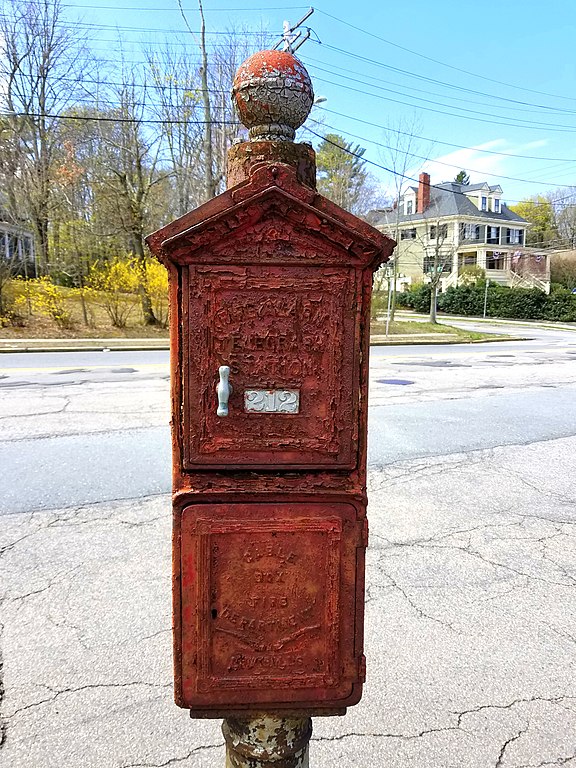
Meanwhile, the 1830s saw the development of the first commercial electrical telegraphs, which within a generation would lead to the first urban fire alarm system: Moses Farmer and William Channing’s “Electromagnetic Fire Alarm Telegraph for Cities”, developed in 1851 in Boston, Massachusetts. The principle was simple: pull a lever, and an alarm would ring in the local fire station. This first system in Boston connected 45 boxes with some 64 km of wire. Similar systems were soon popping up across the United States.
In Europe, things took a little longer. Fire services first used the telegraph for communication between stations, with members of the public still relying on their feet. And even this development lagged behind the US. London’s fire brigade, for instance, wasn’t using telegraphs until 1866.
France, meanwhile, was a late adopter of the electrical telegraph. In the early days, the country chose to hang onto the semaphore telegraph, an optical communication system invented by Claude Chappe during the Revolution and developed during the First Empire. Indeed, Samuel Morse initially failed to sell his telegraph to the French government, which was concerned about the risk of sabotage.
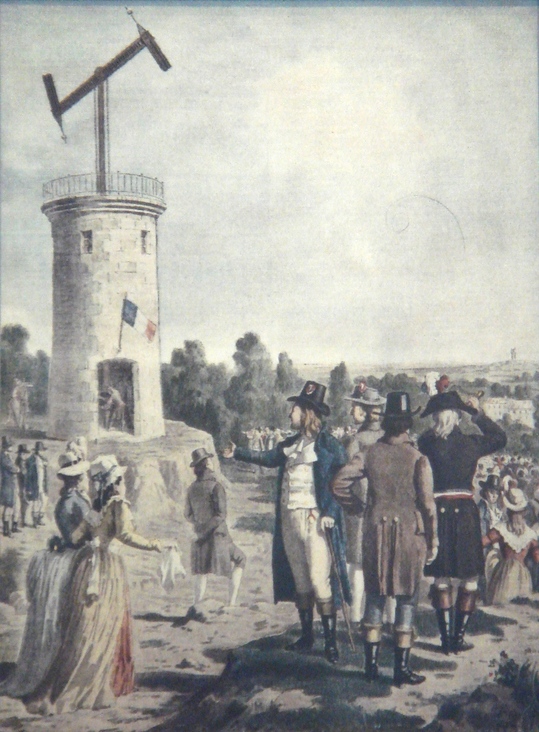
It wasn’t until the fall of the Second Empire in 1870 that the Parisian fire department (now upgraded from “battalion” to “regiment”) began using the telegraph. Connecting all the stations to each other would take another decade. In 1876, the local prefect received an offer from an American who had installed fire alarm systems in the US. The fire chief refused – but only on cost grounds. The local authority and the fire department instead investigated a home-grown version, developed by a certain M. Petit.
The first fire alarm call boxes in Paris were installed in 1885. By 1889, 260 fires had been reported thanks to Petit’s network, which would eventually count more than 600 devices.
Development
By the time Paris adopted this technology, another was making waves: the telephone. As early as 1893, the Petit boxes were already being modified. Now, a door could be opened to allow someone reporting a fire to communicate useful information to firefighters.
In 1937, a complete overhaul of the network was commissioned. The box I stumbled upon in Le Marais is from this generation. These new boxes had no doors, meaning they were better defended from rain, dust and unscrupulous members of the public. To raise the alarm, all people had to do was break the glass, and then as long as they were within 2 metres of the device, they could converse with a firefighter through a speakerphone.
Decline
The very technology that had revolutionised these devices would ultimately prove their downfall. The first emergency phone numbers2 were inaugurated around 1930, allowing those with access to a phone to call the fire department. By 1983, telephones (both personal and public) were widespread enough that the cost of maintaining this network was no longer deemed justified, and the boxes were decommissioned.
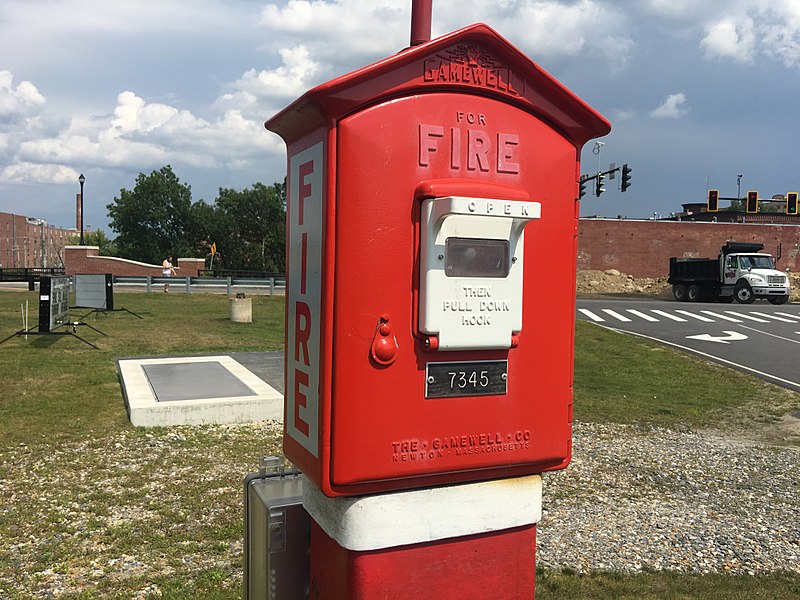
The home of the world’s first fire alarm call boxes never took the same decision. Indeed, the way the Boston fire department sees it, they provide useful redundancy in case of problems with the landline and mobile networks. Similarly, San Francisco’s boxes are still in working order. Curiously, these cities never saw fit to upgrade them with telephone technology, choosing instead to stick to the simplicity of the telegraph system.
But in Paris, the fire alarm call box is now nothing more than a roadside museum piece.
-
It’s worth noting that in France firefighters respond to many situations which are the domain of paramedics in other countries. ↩
-
France traditionally has different numbers for different emergency services: 15 for medical emergencies, 17 for the police and 18 for the fire brigade. Since 2000 France, like the rest of Europe and many other countries around the world, also uses the number 112. ↩
 Fabric of Paris
Fabric of Paris